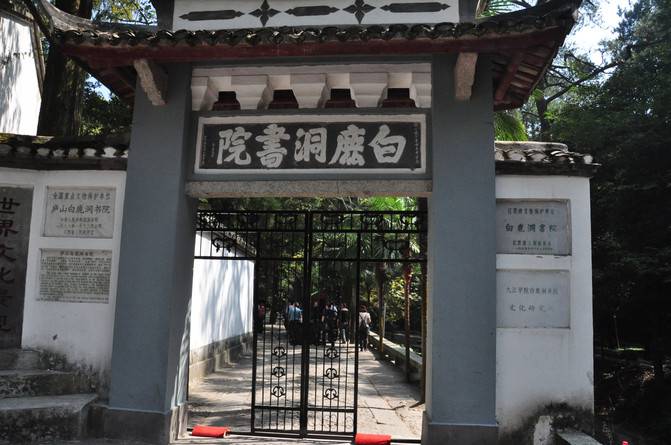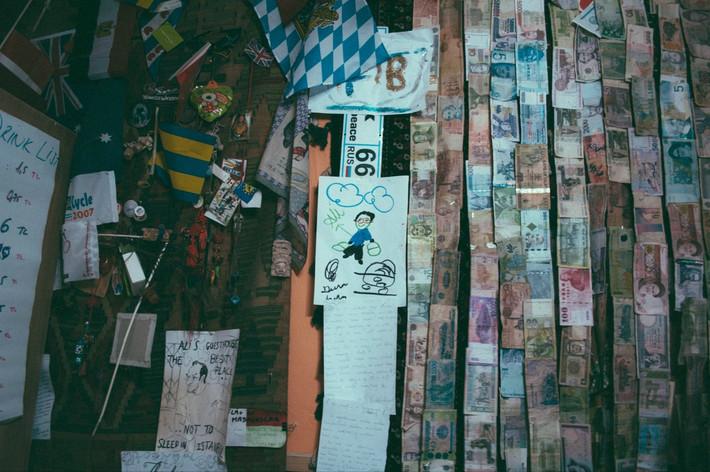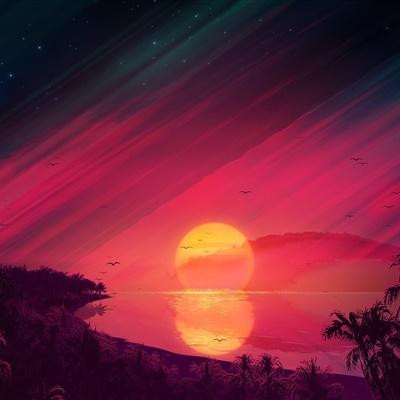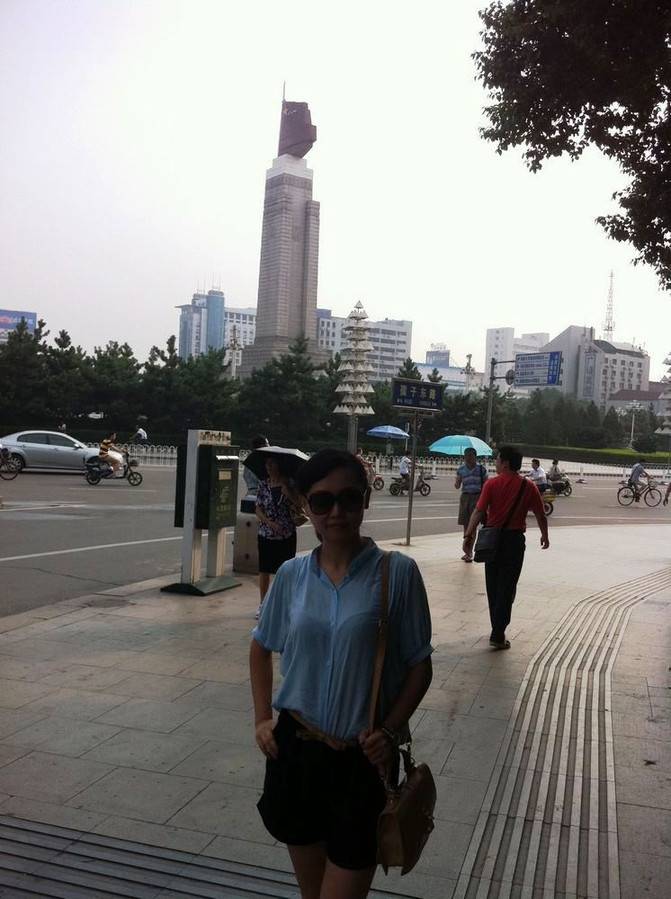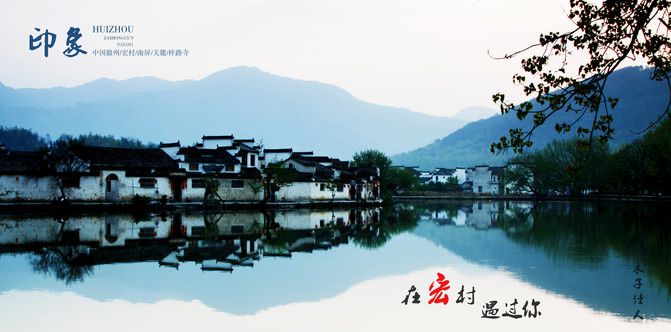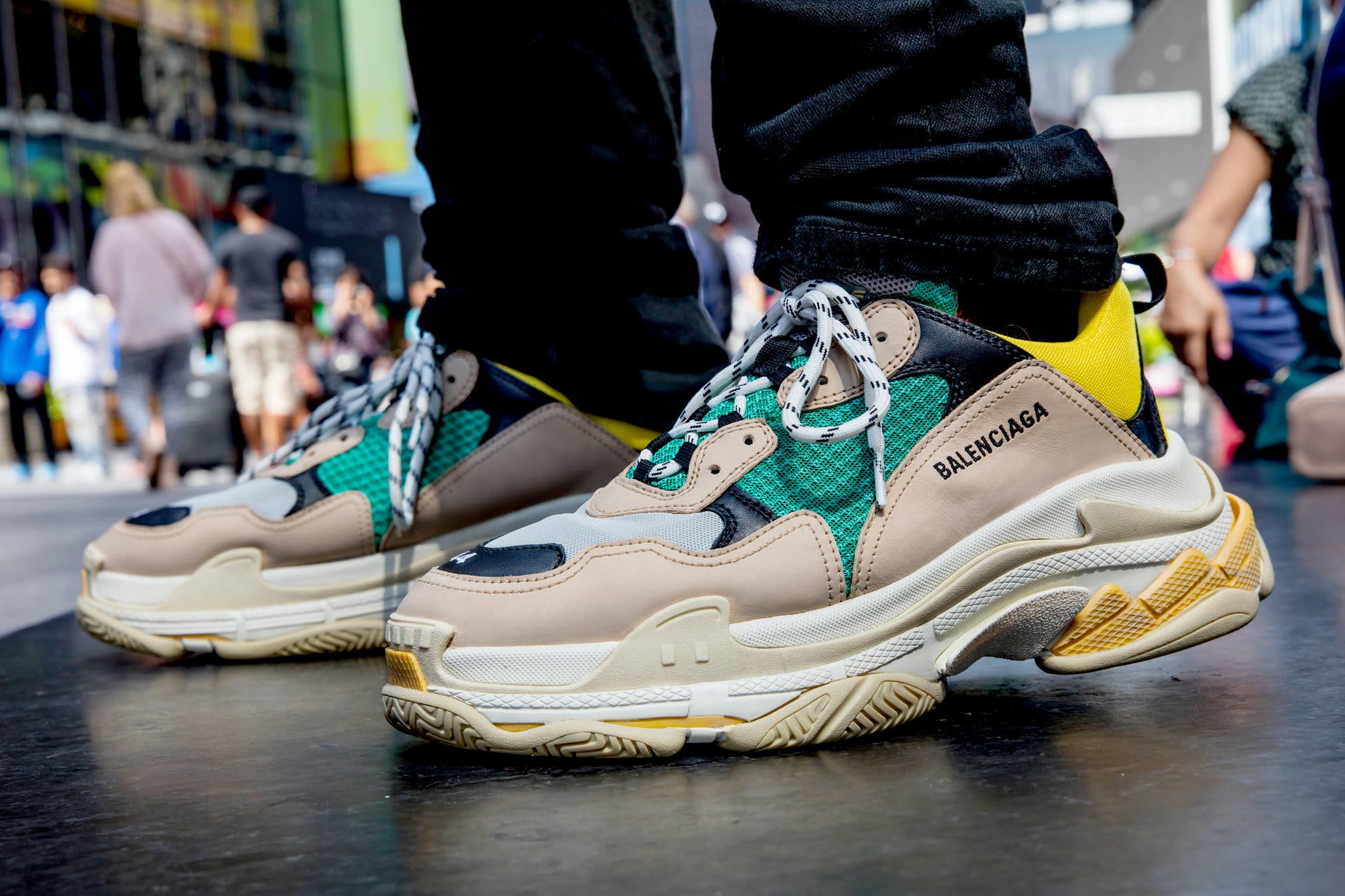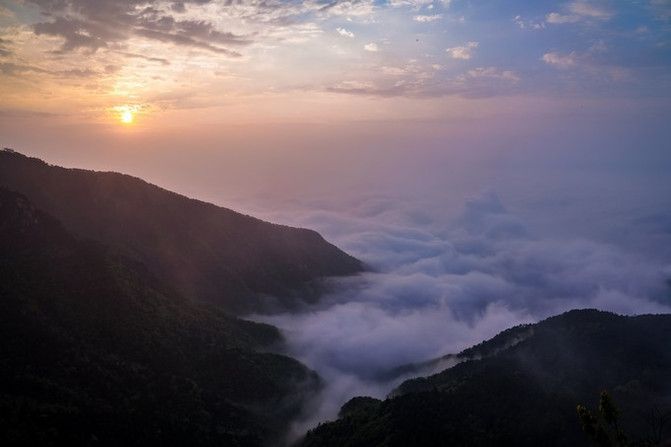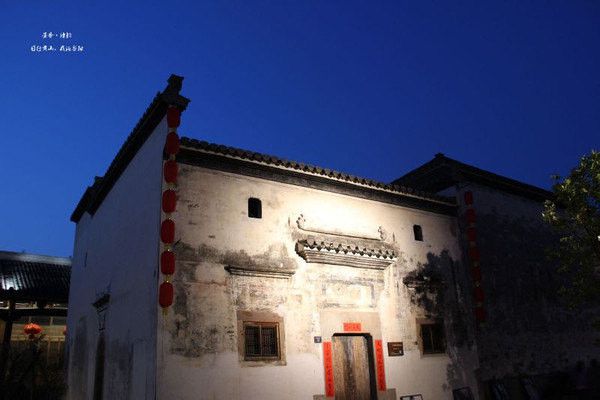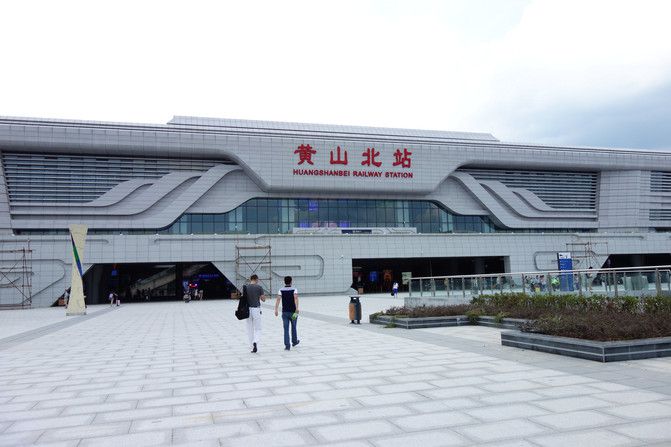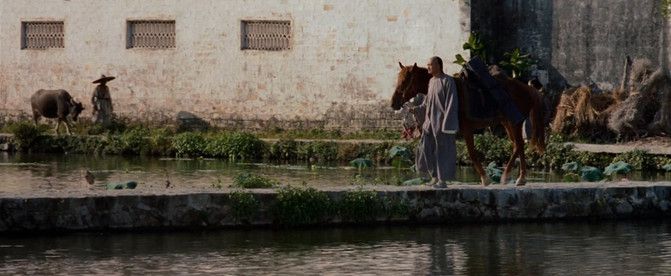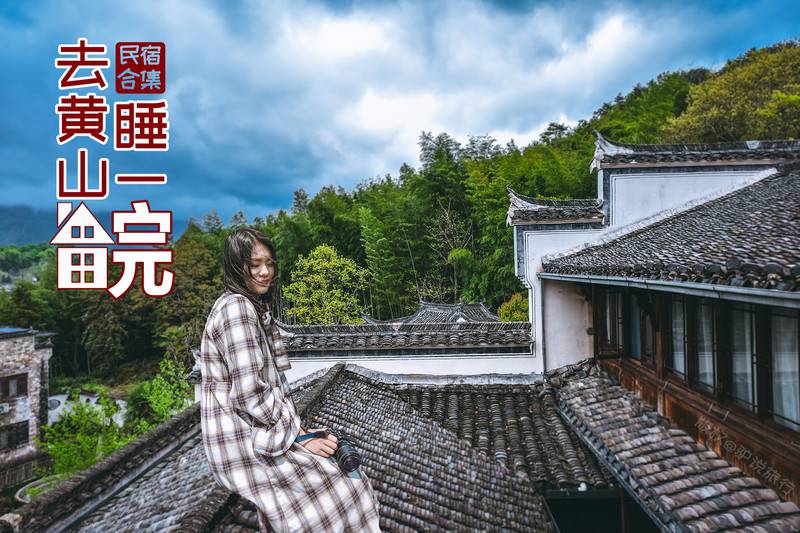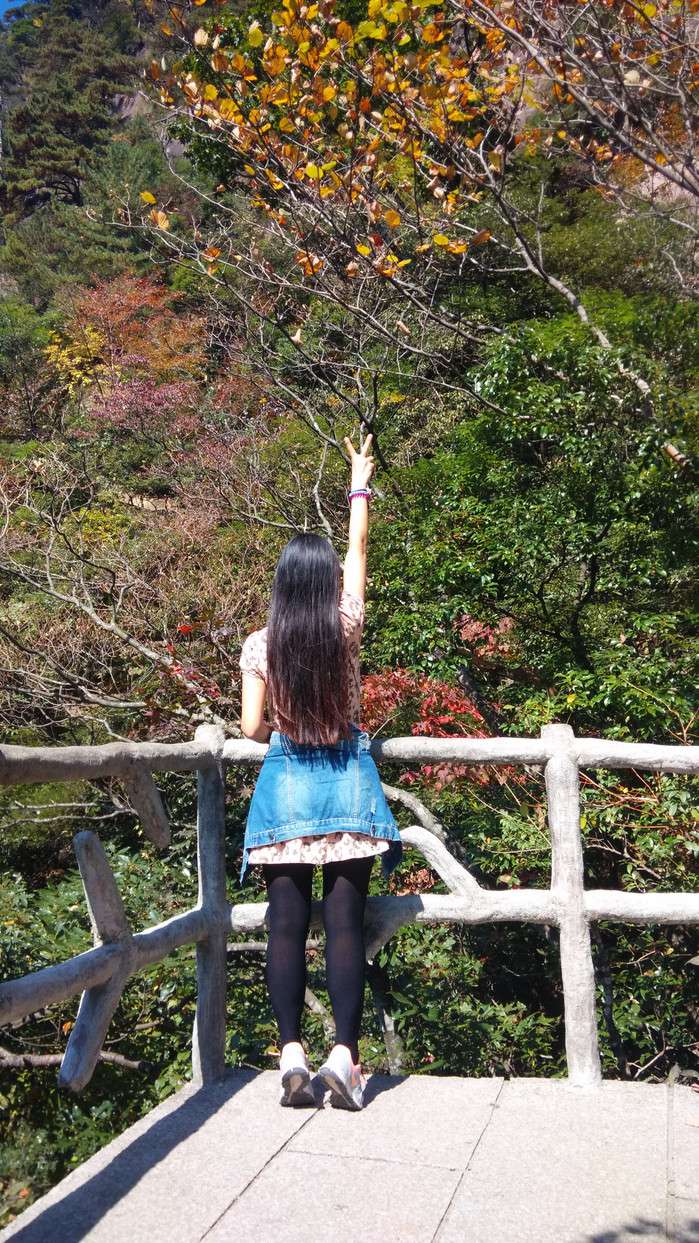October 19,2021 Post by :Ruoshui Chen
Where civilizations meet - the magic TurkeyHow to play: Culture
The author went to these places
Istanbul
Marmara Sea
Strait of Bosporus
Big bazaar
Hagia Sophia
blue mosque
Suleymaniye Mosque
Topkapi Palace
Golden Horn Bay
Dolmabahce Palace
Kaladata
Cappadocia
Fort uchisa
Antalya
Pamela.
Ephesus
Sirens
Taksim square
Underground water Palace
Published on 2012-12-28 16:12
Where civilizations meet - Turkey
2011
This is the Ottoman Empire that straddled Europe, Asia and Africa. In order to explore this former empire, I came to Turkey. On this ancient and long Anatolian plateau, history interprets the conquest and resistance, construction and destruction of countless nationalities and religions, where Eastern and Western civilizations collide and blend. Since prehistoric times, Turkey has been a melting pot of different races and cultures: the ancient Hittites set up businesses here, the Assyrians established trade bases here, the Persians occupied and ruled the area, Alexander the great of Macedon established the rule of the Greeks here, and became a province of the Roman Empire after 190 BC. After the collapse of Rome, the Seljukes, the Turks, the Turks, the Turks, the Turks, the Turks, the Turks, the Turks, the Turks, the Turks, the Turks, the Turks, the Turks, the Turks Until the end of the 16th century, the Ottoman Empire, whose ancestors were Turks, reached its peak and became an unforgettable memory of Turks. Most of Turkey's territory belongs to Asia, and only part of Istanbul is in Europe, but Turks consider themselves European countries.
Istanbul is a strange city. Because of its legendary experience, because of its rich culture. Istanbul straddles Eurasia and is surrounded by the sea on three sides. It is surrounded by the Mediterranean Sea, Aegean Sea and Marmara Sea. The Bosporus Strait divides the city into Asia and Europe. It has experienced the rule of Persians, Athenians and Spartans, the plunder of Crusades and the occupation and rule of Turks. It has changed from a holy city of Christianity to a great city of the Islamic world. It is a historical book full of legends. This world-famous city with a history of more than 2600 years was built by the Greeks in 660 BC, known as Byzantine; In 330 A.D., Constantine the great of the Roman Empire moved the capital here and rebuilt it, calling it Constantinople, which means "the capital of Constantine"; In 395 ad, the Roman Empire was divided into East Rome and West Rome. It became the capital of the East Roman Empire. For hundreds of years, it was the political, economic and cultural center of the eastern Mediterranean; In 1453, Ottoman sultan conquered Constantinople and changed his name to Istanbul. Since then, Islam replaced Christianity and Sudan became the ruler. After the collapse of the Ottoman Empire, Constantinople, which was once the most civilized and developed city on earth (after the decline of Western Rome, Constantinople has been the most gorgeous and richest city in the world for a thousand years), has gradually declined, but it still maintains the reputation of "Oriental Paris". Because the world's first international luxury train, the famous "Orient Express", connects Istanbul and Paris. In 1923, Turkey moved its capital from Istanbul to Ankara. Istanbul became the intersection of eastern and Western cultures. Walking on the streets of Istanbul, European faces with high noses and blue eyes and Islamic headscarves and robes constitute a "harmonious society". The towering mosque minarets guard a noisy modern city. Although this is a modern city in Europe, the winding narrow alleys, the fragrant "kebaba" (Turkish barbecue), the minarets of mosques, the maze like bazaar with more than 4000 shops, and the steamy Turkish bathrooms all remind you that you are walking through the dynasties and into the corridor of history. The old urban area of Istanbul is the "Sultan Ahmed" district. Many tourists have never left this area since they came to Istanbul, because it is the "ancient city of Istanbul" and a world heritage site assessed by the United Nations. Here are most of the famous scenic spots in the city, such as St. Sophia's Cathedral, blue mosque, old Topkap palace, Grand Bazaar and so on.
Aya Sofya, the Cathedral of St. Sophia, came to Istanbul to find his way. You don't need to say the full name of Turkey, just a "Sophia" is enough, because it is a name that all Istanbul people know and are proud of, and can be called Turkey's national treasure. It is said that Istanbul reflects the intersection of eastern and Western civilizations, so St. Sophia's Cathedral is the most classic representative. St. Sophia's Cathedral is the only building in the world that has been transformed from a temple to a church, and then from a church to a mosque. It was first built by Constantine in 335 AD and continued by Justinian I in 532 ad. In 1453, it was rebuilt into an Islamic Mosque by the Ottoman Empire. In 1932, Kemal, the father of modern Turkey, turned the cathedral into a museum, and the Byzantine mosaic art treasures, which had been covered for a long time, could be seen again. What makes Sofia special is that it creates huge domes and doesn't use pillars to support them indoors. In fact, there are still some columns, which are cleverly designed in the surrounding walls. If you go to the opposite Blue Mosque and see the four thick "elephant legs" used to support it, you can understand the exquisite design of the side chamber. Sofia's dome is 55 meters above the ground and was the largest in the world until St. Peter's Cathedral in Rome was completed in the 17th century. During the period of the Ottoman Empire, Sophia was rebuilt into a mosque, the main body of which was a church structure, but four minarets of the mosque stood around. Walking into the church, the strongest feeling is towering and huge. The unattainable dome and magnificent marble columns are magnificent, which will give you a strong shock. The inner wall is decorated and paved with colorful marble bricks and mosaic paintings. The natural light from the surrounding windows creates a psychedelic religious atmosphere for the dark church. Looking up, the statue of the Virgin Mary and the son above the dome is looking down on all living beings with gentle eyes. In a prominent place on the wall of the church, there are six big disks with a diameter of about 10 meters, painted with Arabic characters "all things are not the Lord, but Allah", which is said to be the symbol of Muhammad and his disciples. The vague holy images on the ancient walls and the exquisite carvings on the Islamic style stone columns are telling the war between Christianity and Islam in silence. Now, the two are miraculously integrated, which shows the history of this religious holy land after the change of ownership. Looking up at the big Arabic lettered disc hanging on the dome and the mosaic collage of the virgin and the son on a higher level, the two are gathered together. The kind of religious touch is far more exciting than any building. This church is a treasure of ancient architecture, which has a great influence on later buildings. Sophia can prove that Eastern and Western civilizations inherit and blend with each other. The emergence of the great dome of the church began with the pantheon in Rome, which was the result of the Roman invention of cement. Later, Islamists also began to learn from this dome structure, the most representative is the "blue mosque" opposite Sofia.
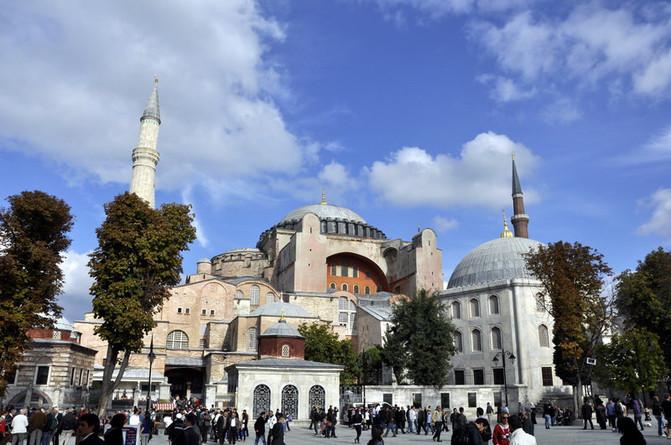
Sofia's appearance
Sofia has a huge dome inside, but it's a pity that the camera can't get a full picture of it. The momentum can only be seen on the scene
From the second floor, the huge chandeliers look like a blooming lotus
Blue mosquewhen you visit Istanbul, the Islamic city, you will be confused by the domes and minarets of 450 mosques everywhere, the most famous of which is the blue mosque. In fact, the blue mosque is a common name, which gets its name from the brilliance of the blue tiles in the temple. Its real name should be Sultanahmet camii, the khomet mosque in Sudan. After the Ottoman Dynasty conquered Constantinople, it was renamed Istanbul. While St. Sophia's Cathedral was transformed into a mosque, Sultan hormet I (1603-1617) was also deeply impressed by its magnificent dome. In 1606-1616, he completed the unique mosque with six minarets named after himself, which is just one more than the ordinary mosque. It is said that only the mosque in Mecca, the holy city of Islam, can have six minarets. During the construction of the blue mosque, the architect heard the Sudan's "golden" order. He did not expect that the sound of "golden" and "six minarets" was very close. As a result, the blue mosque had six minarets. These two famous religious buildings stand opposite each other, showing the good intentions of Sultan hormet I to compete with St. Sophia Church. The blue mosque is elegant in shape, with a large dome of 27.5 meters in diameter. In addition, there are four smaller domes and 30 small domes. The large and small domes are stacked one after another, which is very beautiful. Six high-rise spires on both sides of the arch guard, against the background of white clouds and blue sky, are more and more solemn. The whole building is made of big stones without using a single nail. The walls of the temple are decorated with more than 20000 blue and white Iznik tiles, which are Turkish specialties. 260 small windows, tiles, carpets and Arabic calligraphy are important attractions of the temple. In this 4600 square meter hall, when 5000 Muslims lay down to pray, the scene was grand and the atmosphere was solemn. Surrounded by the faint blue light, the believers seemed to be in the warm embrace of Allah.
Blue Mosque in the distance
S ü leymaniye Mosque
As mentioned earlier, the Church of St. Sophia and the blue mosque are proud of Istanbul, but when you visit the old city, you will look up to the figure of Suleiman mosque, which has become the symbol of Istanbul on the Bosphorus bank. Suleiman mosque is located on a high slope overlooking the old city by the Bosporus Strait. It was built for Suleiman I (1495-1566), the tenth generation Sultan of the Ottoman Empire. This "I" is the 10th and longest serving Sultan in the Ottoman Empire (1520-1566), who also served as the supreme spiritual leader of Islam. Because of his literary and martial arts achievements, he was widely known as the great Suleiman in the west, and was an outstanding monarch in Europe in the 16th century. Under his rule, the Ottoman Empire entered its heyday in politics, economy, military and culture. Suleiman not only became an outstanding poet and goldsmith with his own efforts, but also a great patron of culture. His reign was the golden age of art, literature and architecture in the Ottoman Empire. The mosque was ordered by Suleiman I and built in a very short time from 1550 to 1557. It is the most important work of the famous Turkish architect Sinan. The whole complex is built on a complex and steep hill, which combines the hill with the surrounding streets by using an extraordinary architectural scheme. For the first time, red tiles were used in the interior of the mosque, and 130 different colors of glass were used in the windows to make wonderful calligraphy. The pattern of mosques is similar, but the number of tourists in Suleiman mosque is significantly less than that in blue mosque.
A panoramic view of Suleiman Mosque
Suleiman mosque in the sunset
The inner court of Suleiman mosque is the same as blue, but the color is different
Topkapi Palace Topkapi Palace is located in the "palace Cape" on the South Bank of Istanbul's "golden Cape". Between 1460 and 1478, the Ottoman sultan Muhammad II (1451-1481) ordered the construction of the palace, which covered an area of 700000 square meters (now only 80000 square meters). For more than 400 years, half of the 36 sultans of the Ottoman Empire ruled the Empire here until the establishment of a new palace in 1856. After the founding of the Republic of Turkey, it became a museum, and now it is used to be called the "old palace". Topkapo palace is a grand palace with many courtyards. It is divided into four courtyards, including the back palace. It takes half a day to visit in one circle. Its architecture is resplendent, with modern tap water facilities and bathroom equipment, including porcelain hall, treasure hall, etc. There are more than ten thousand pieces of porcelain from the yuan, Ming and Qing Dynasties in the museum, among which there are many rare treasures. No wonder its curator said with a smile: besides China, I have the most Chinese porcelain! It is the third largest porcelain collection in the world after China and Germany. The second courtyard includes the harem of the Sultan's concubines. It is said that there were 300-400 concubines from different countries in the harem at that time, and more than 1000 lived here most of the time. I don't know how many "harem stories" have been staged over the years. Today, all these have become historical and literary works, only those beautiful ceramic tile decoration evoke infinite reverie.
Palace gate
Interior of the back Palace
There's a huge mirror in the harem. Take a picture of yourself in the mirror. The light is dim, but it is not allowed to use tripod. It is not easy to show your face clearly and the picture is not crooked. Do you want to try?
Domabahace palace is a famous domabahace Palace on the Bosporus Strait in the new city of Istanbul. The emperors of the Ottoman Empire also understood the principle of "keeping pace with the times". In the 19th century, the prosperous life of the newly rising western European powers was enviable, so the 31st emperor of the Ottoman Empire built this completely Europeanized palace in the middle of the 19th century. The palace construction and interior decoration are world-class, famous for exquisite carving and gorgeous murals, chandeliers and decorations. Because it is different from the previous topkapo palace, it is called the new palace. I have seen all the three famous European palaces (France, Austria and Spain). I thought the form and content of the palace were just like this. But when I entered the palace, I was surprised by its magnificent and exquisite decoration. The palace is full of Baroque style buildings and European style courtyards, carved beams and painted pillars, exquisite marble, precious carpets, and exquisite furnishings. From the inside to the outside, it is full of all kinds of gorgeous decorations and luxurious furnishings, including foreign gifts from European monarchs such as Britain and France, as well as ivory and shell carvings and ceramic treasures from China and Japan, 15000 kilograms of gold were used in the interior decoration of the palace. One of the characteristics of this museum is that there are bright crystal lights hanging everywhere. In particular, the last hall I visited really shocked me - the huge and towering hall is magnificent, which can't be completely represented by photos (postcards)! The most famous in the hall is the Victorian chandelier weighing 4.5 tons, which is hung in the center of the largest and most magnificent palace in the world. It is said that it takes two weeks for the chandelier to be removed and cleaned, and the carpet under your feet is also the largest whole carpet in the world. It is said that the lamp was purchased with a loan from a European consortium, which is exactly the same as Empress Dowager Cixi's spending on Navy and military expenditure to build the summer palace.
Unfortunately, the new palace is not allowed to take photos, so there are no photos to enjoy.
The bosporos "is like a horse running from Asia and crashing into the European continent." It vividly describes Turkey's geographical location and territorial conditions. From the map, the terrain of Turkey looks like a horse's head. It bumps into the butt of Europe, and there is a crack in its nose, which is the Bosporus Strait. Istanbul, Turkey's largest city and port, has become the only city in the world that spans two continents and the intersection of world civilizations. One of the main reasons why Istanbul is famous in the world is its unique geographical location, which connects Europe, Asia and Africa from the sea. This superior geographical location not only makes it an intercontinental transportation hub, but also a place for military strategists. Bosporus is so famous that a boat tour is a must for almost all tourists. The cruise ship sets sail from the yalada bridge, enjoying the European area on the west bank with numerous ancient buildings and the Asian area on the east bank with dense new residential communities. Two cross sea bridges and numerous ferries connect the life on both sides of the Strait. The cruise ship starts from the old urban areas of Europe and ends in the suburbs of Asia.
Bosporus bridge, and the second bridge
The Asian part of Istanbul across the Strait at sunset
Galata Bridge
The guide book is translated as "Galatians", but I think it's misleading to read like this, and the Turks can't understand it. It's a pleasant place. Although it's not a scenic spot, it's a good place to enjoy the urban scenery and local customs of Istanbul. Every evening, the bridge and the Asian part are bathed in the warm sunshine of the west slope. Local people line up on both sides of the bridge, and countless fishing rods stretch out to the sea to catch their vision of life. The towering spires in the old city are reflected in the red clouds. A bridge connects the secular and sacred images, which is really refreshing. Galata tower not far away is a great place to enjoy the scenery. On the viewing platform, it is absolutely a wonderful feeling to look at the panorama of Istanbul under the blue sky and the intersection of Eurasia at your feet. Looking at the surging water under my feet, I can't help but recite Confucius' famous saying that "time passes like a husband". For a moment, the vast and distant history of thousands of years rushed to my heart together, which makes me full of imagination. How many ethnic, religious and national disputes, wars, exchanges and integration have been demonstrated in this ancient intersection of Eurasia since ancient times. At this moment, it is the "blending of feelings and scenes". Introduce a cheap hotel: walk to yalada bridge for 10 minutes, double room (shared bathroom) 60 lira / night, close to the commercial street, there is a breakfast restaurant across the road. www.Hotelerenler.com Hotelerenler@msn.com 90 212 527 34 68
The towering spire on the other side is Istanbul's commanding point, the Mirada tower
Cappadocia when you are driving on the dry Anatolia plateau and drowsy, you are suddenly awakened by a large piece of ferocious and strange stone pillars, thinking that you are sleepwalking on the desolate Moon - Cappadocia has arrived. In this region of central Turkey, there are undulating mountains and ravines. Among the ravines and ravines, there are "stone pillar forests" one after another. There are many stone pillars standing in the sky, including cliffs, folds and stalagmites like mushrooms, tree stumps and minarets, forming a unique landform. Local people give them an image and beautiful name - Fairy chimney, which is a unique desolate and strange landscape like the moon ball in the world. It used to be an active volcano, where magma and ash cooled and solidified to form a thick layer of tuff. As a result, the soft part of tuff has been eroded by the sun and wind, frost, rain and snow, forming gullies on the ground and undercurrent caves underground. The relatively solid part remains, forming a variety of rocks. These strange stone forests are also a cultural heritage of human activities. Many years ago, devout Christians, in order to avoid persecution and escape from this desolate and strange mountain area, hollowed out many stone forests, opened churches in them, and adhered to their beliefs. Goreme was originally a small village, but it was a magical place because it was crowded between these towering fairy chimneys and the magnificent beehive cliff. Inside and outside the village, there are endless stone pillars, with thousands of jagged rocks and towering rocks. It is one of Turkey's precious heritage that has not been destroyed. Jueremei people are extremely clever and use these natural stone pillars to build houses. In the village, they cut out almost all the stone pillars and opened many popular cave hotels. These stone houses, which combine natural beauty with artificial beauty, are similar to caves on the Loess Plateau in Northern Shaanxi. Today's small village has been very prosperous, with all kinds of food, housing, transportation and tourism, becoming a tourist attraction.
Especially when the sun is falling, when you climb up the high "viewing platform" in the village, a long red strip-shaped Valley unfolds its mind unreservedly in front of you. With the setting of the sun and the warm sunlight, the thousands of hills and ravines arranged like terracotta warriors and horses are dyed into a rose red. They are both magnificent and charming, which makes people intoxicated. All around a quiet, only Rose Valley silently in the sunset to show its charming but ferocious charm. In the face of the great shore of nature, people's thoughts go through the wild ancient times, and they can't help thinking about it. What kind of mystery is hidden in the gully? I have been sitting on the "viewing platform" for a long time, appreciating, indulging and thinking about it. The colorful nature presents a variety of strange shapes. Human beings not only absorb the means of production and living, but also absorb, refine and cultivate a variety of rich aesthetic nutrients. The spiritual impact on people is very complex. The grandeur of heaven and earth can produce bold and unconstrained spirit; The beauty of scenery can also give birth to graceful lyricism; The ferocity of mountains and rocks makes people even more reverie. This is why human beings like to travel and get spiritual needs from nature. In a word, man and nature are interdependent. I can't help but lament the power of heaven's creation. In jueremei, you can also experience and appreciate another kind of scenery - hot air balloon. Every morning, countless hot-air balloons rise to the sky, colorful balloons dotted with this wild, strange and dangerous stone forest, in addition to allowing you to overlook the spectacle from the air, the hot-air balloon itself also constitutes a gorgeous landscape.
Tourists in the hideous strange "open-air museum" to explore, as if to the moon
Tourists climb up and down the caves and churches dug by Christians to see the relics of the saints
Is this the surface of the moon
The local people hang clay pots on the strange trees, which is also a scene, but also a reflection of the wild terrain
Every morning, before the sun rises, hot air balloons have been flying over the village of juereme in batches
Fairy Chimneys
Overlooking Rose Valley
The sunset reddened Rose Valley
Rose Valley
Overlooking jueremei village in the strange stone forest from the "observation platform"
My cave hotel
The 60 meter high fortress of wuchisa and the huge rock is a modernist work of art. This is also a strange stone village similar to juereme (10 minutes' drive away). Several cone-shaped huge rocks were hollowed out by the early settlers to build fortresses, and connected to form a huge community. There are countless openings on the huge rocks. When foreign enemies invaded, the residents who usually stored water and food in the cave community could hide for months without going out, and built underground passages.
A close look at uchisa. There is a hotel and a hotel in the village. It's also a pleasure to sit on the platform of the hotel, drink coffee and enjoy the strange rock mountain of uchisa like a beehive.
Turkish village woman beauty, I want to stay with her to dig mountains and open a hotel
Dungeons
There is a famous saying in literary creation, which is called "typical characters in typical environment". In the peculiar geographical environment of kapadochia, there is also a peculiar cultural story - the underground city, which has become a major attraction for tourists.
There are more than 30 large and small underground cities in kapadochia. The large underground cities, such as kaymakli, have an area of several thousand square meters, a depth of 55 meters, and are divided into seven floors. It has the functions of life, religion, war and so on. Seeing this, Chinese people will naturally think of the tunnel warfare during the Anti Japanese war. But when you bend over, head down, climb up and down this huge underground city, you will understand that the underground city completely dug in stone is definitely a huge project much more complicated than tunnel warfare. It is not simply connected from front to back, from top to bottom, but like a labyrinth extending in all directions. It is not a cave life at all, but an underground city with schools, churches, bedrooms, kitchens, wells, storage, armory and so on. There are dozens of holes in it. The air can flow smoothly without choking. However, you should also be careful that the hot oil will fall down! Feces are regularly transported outside for treatment. According to legend, these underground cities were dug by the Hittites more than 3000 years ago, and later completed by Christians and used for a long time. Before Constantine recognized Christianity, the Roman Empire cruelly suppressed Christians; Later, the rule of Islam forced Christians to go far away. Under this background, Christians hid in this remote and desolate place one after another, got into caves, hid underground, and adhered to their beliefs. Through the hard work of many generations, these amazing underground cities came into being. It's hard to imagine that those believers who spend so much time in the underground city can have such perseverance and perseverance for their faith and survival. After the establishment of the Ottoman Empire, the local residents converted to Islam one after another, and almost all the people who insisted on believing in Christianity withdrew. Kapadochia, one of the Christian centers in Asia Minor that flourished for hundreds of years, was gradually forgotten by the world. In 1907, the French came here and discovered these miracles.
It's hard to climb up and down in the underground city
Konya Konya is an inland city located in the middle of Anatolia plateau, which is the "Bible" zone of Turkey. In the 11th and 14th centuries, a Turkic Sultanate of selju rose on the Anatolian plateau (unfortunately, it did not last long and was later destroyed by the Mongols). Konya was its capital. The reason why Konya became the holy land of Islam in Turkey is that Geraldine Rumi, a famous thinker and philosopher in Turkey, was born here. Rumi is one of the greatest Sufi philosophers of Islamic Mysticism in Turkey. His thoughts in the fields of religion, philosophy and ethics have had a profound impact on later generations. Later his followers organized a congregation called "Mevlana" (our mentor), or the revolving toben monk. Nowadays, all pilgrims and tourists will go to the Mevlana Museum, which is transformed from the mosque. Konya enjoys the reputation of "Museum of natural history and art" because of its rich cultural tradition and long history. The religious dance founded by Rumi is the whirl dance. According to historical records, during the religious activities in Anatolia in the 12th and 3rd centuries, all Islamic sects had their own original religious music and dance, but only the revolving dance has remained until now, and has become an important tourist attraction in Turkey today. Nowadays, many tourist cities in Turkey have whirl dance performances, but it's just a "performance" of three or five people. Only in the cultural center of Konya can we see this complete religious ceremony composed of dozens of people. Revolving dance is a kind of ritual dance that expresses unity around Allah. It is it that produces the famous revolving toben monk, which is included in the UN intangible cultural heritage list. The revolving toben monks wear long white dresses and wide skirts, which represent their shroud. The big black cloak symbolizes the mausoleum of the world, and the high conical felt hat is the tombstone. They bend their arms to their chest and spin on the floor, which means that they have given up their life in this world and will be reborn in the mysterious union with Allah; By raising their right arm, they receive blessings from heaven; And then by bending down the left arm to communicate with the earth. There are many toben monks around the world holding similar ceremonies, but the original Turkish version is the most fluent and perfect. With the sound of the flute, the soul of the dancer comes out of the body and ascends to heaven in elegant rotation. This rotation is repeated over and over again, and ends in union with Allah.
Antalya
Antalya is a port city on the Mediterranean coast of Turkey. With warm climate and many historic sites nearby, Antalya has developed into a tourist center. Although it has famous historic sites, archaeological museums and beaches, what impresses me most is the old city called kaleici. The old city is full of medieval alleys and Ottoman style colorful houses, packed with hotels, hotels, handicraft shops, etc. it is very charming. The so-called petty bourgeoisie sentiment is very strong. It is a good place to stroll, look around, and satisfy shopping desire. From the slender alley to the end is the green park by the sea. Suddenly, you can see the Mediterranean in front of you. Two different types of scenery form a contrast, giving people different complementary experience. When I was looking for a hotel in the old city, I went to an alley and was looking around for a hotel. A lady came up to welcome me to her home, so I went into the net and experienced a foreign "farmhouse". After looking at her house, I walked around the street and found that the price she asked was the same as that of the ordinary private hotels on the street, which were all 60 lira, but the hotels were at most a small room with limited space. There are three floors in her home, one is half underground, and the third floor is the loft on the slope. There is a long dining room in the middle of the floor, surrounded by two bedrooms, a living room, a toilet, a kitchen, a storage room with washing machine, and a garden. If it doesn't rain, they usually eat in the yard, which is very emotional. This relaxed environment is not comparable to a hotel room (even a high-class hotel). Usually she gives you the key and she's free to move. The warm-hearted host also took me to the street to find a better exchange rate shop to exchange foreign exchange, buy tickets, and send me to the station in the morning. In order to experience life, I proposed to eat at her home. So I had a wonderful dinner in the garden with a Dutch old man who lived in her parents' house and her sister who was specially called to support me. I could not believe that I could get along with a few Pidgin English. She said that I was the first Chinese guest to come into her home. I asked her, where can you come to the source of customers if you don't list (belong to black door) or advertise online? She said it depends on word of mouth. I told her that starting from myself will open the door to Chinese tourists for you.
On the central square, you can see the symbol of Antalya - yivli minareli with grooves, which is a masterpiece left by the Sultan of selju in the 13th century and has become the symbol of Antalya.
Houses on the pedestrian street
The one in red on the right is the hostess.
The cotton Fort Pamukkale God indeed visited Turkey, created the wasteland of kapadochia like the moon, and dropped a beautiful white cloud on this land. A huge white mountain suddenly appeared on a piece of loess ground, which was out of tune with the surrounding environment and had the elegant demeanor of "coming out of the mud but not being stained". The white steps are like terraced fields. The warm hot spring water flows along the hillside. The platform is filled with water to form a pond. The blue spring water is embedded on the white jade platform like jadeite, just like a fairy in a water jacket dancing in the sun. In the meantime, it's like stepping on the ladder of heaven and sleepwalking in the fairyland of yaochi in yuyuqionglou. Turks call this strange slope "pamkale", or "cotton Castle". In Turkish, Pamuk means cotton and kale means castle, so Pamukkale is called cotton castle. According to scientific explanation, these white steps are actually "travertine" with calcium carbonate as the main component. The local rainwater seeps into the ground, and after a long cycle, it gushes out in the form of hot springs, dissolving a lot of limestone and other minerals in the rock in the process. When the hot springs flow along the hillside, the calcareous deposits along the way, and as time goes by, they form a series of stepped calcified dikes. Huanglong in Jiuzhaigou and Baishuitai in Lijiang are the same landforms in China. In order to protect the ground from being trampled on, the management authorities do not allow tourists to wear shoes to climb the mountain, so whether they are princes, ministers or plain clothes, they are all barefooted, carrying shoes on the hillside and in the flowing water, carefully and happily climbing, sometimes biting and sometimes warming. The most beautiful time of cotton fort is the sunset. When the West slanting sun sprinkles gentle light on the layers of "terraces", the whole hillside looks like a beautiful lotus, the white rock surface turns pink, just like shy snow white, the blue sky and sunset are reflected in the pond, and the cotton fort is in full bloom.? Climbing to the top of the mountain, there is a large area of ancient Roman ruins, Hierapolis, which was built in 190 B.C. and flourished in the 2nd-3rd century A.D. The ruins include the half moon shaped ancient theater, the Apollo temple and many other relics, which became the center of ancient Roman hot spring culture. However, the earthquakes over the years have turned this earthquake into ruins, but the hot spring remains the same.
Ephesus is one of the most famous places in Turkey, where there are more historic sites per square kilometer than any other area in the world. Ephesus is one of the most important cities in the early Christian period. It was founded by Athenian colonists in the 10th century BC. The temple of Artemis is one of the seven wonders of the ancient world (now there is only one pillar). In Roman times, Ephesus was the capital of Asia and the residence of the governor of Rome. It is said that John and Mary, one of the twelve disciples of Jesus, once settled here and wrote the gospel of John here. At that time, with its convenient maritime trade, Ephesus developed into the most prosperous economic and cultural region, with a population of more than 200000. It was the commercial, political, cultural and religious center of Asia Minor. The glory of Ephesus lasted from the fourth century B.C. to the seventh and eighth centuries A.D. After that, because the river mouth was blocked by silt, the sea trade that Ephesus relied on to survive ended, and the old downtown gradually withered and declined. Coupled with frequent earthquakes along the Mediterranean coast, the ancient city of Ephesus eventually became today's Marble ruins. Ephesus is one of the most valuable ancient cities in Turkey. It is also the largest and most well preserved ancient city in ancient Greece and Rome. The city's historic sites cover an area of about two kilometers. Walking on the streets of the ancient city of Ephesus, most of the marble buildings you can see are relics of the Eastern Roman Empire. Although this once prosperous downtown is now just full of people, it does not lose the style of king. Shuttling through the ruins, the past flourishing age is just in front of us: temples, theaters, open-air sports grounds, gymnasiums, fountains, bathrooms, conference halls, toilets and even brothels, all telling people about its prosperous past. Today's ancient city is relatively complete preservation of the library. There is only one main wall left in the library, which is still standing upright. The complex and exquisite decoration and carving of the library can be compared with any famous building. The Turkish government printed it on a 20 lira note, which shows its position in the hearts of Turks. Interestingly, the building opposite the library is a brothel. There is still one of the oldest brothel signposts on the floor at the entrance of the Library: a square represents the library, and one foot points to the opposite side of the library. There are beautiful faces, a coin and a heart carved there. Its meaning can be summed up as: "there are beautiful women on the opposite side of the library, but they are welcome only if they have money." The local people summed up a classic sentence: "no money, no honey". It seems that people have realized the "harmonious" relationship between spirit and body since 2000 years ago. As the setting sun falls to the west, the group of tourists gradually leave, and the ancient city returns to tranquility. The stones dyed red by the afterglow, standing silently in the evening wind, have seen off again after thousands of years of sunset. I wandered between the high and low stone walls and pillars, looking at the statues with missing head and arms, listening to their stories of time. The broad marble paved harbor road is overgrown with weeds and stretches far away. At the beginning, it ended in a harbor full of sails. Now, there are only vast fields left. This is the realization of the Chinese idiom: Vicissitudes of life.
Behind the arch is the library with only one wall left
Xilinger sirince is located in a beautiful hilinger village in the mountainous area 9 km east of Selcuk. It is said that after a group of free Greek slaves settled here in the 15th century, they named it "cirkince", which means ugly, so as to prevent outsiders from following. It wasn't until 1926 that it was transformed into a more authentic "sirince" - a comfortable and pleasant place. The village is surrounded by beautiful orchards, and the red roofs of the Ottoman era are scattered on the hillside, maintaining the ancient flavor. It's a pleasure to walk on the narrow stone road in the village, see the flowers and fruit trees around the old house, and taste the mellow fruit wine brewed locally. There are many family hotels in the village, where they stay for a few days, doing nothing, climbing high and looking far, tasting wine and chatting, watching the olive trees swaying and listening to the breeze coming. They are also life on the journey. After the first World War, Greece, whose national consciousness was awakened, got rid of the centuries long rule of the Ottoman Empire. In 1923, Greece and Turkey signed the Treaty of Lausanne to stop the war and reach an agreement on large-scale population exchange. Over the next two years, 1.1 million orthodox Greeks returned from Turkey, and 380000 Muslim residents moved from Greece to Turkey. Among them, 418 Turkish families moved from Crete, northern Greece and Bulgaria to hilinger.
Ozdere
The name sounds awkward. I learned it from the local people several times, but I still can't remember it. This small village was introduced by a Suzhou sister I met in juereme of Cappadocia. She went with a Dutch aunt. This is a small town by the Aegean Sea, an hour's drive from Serchuk. This is a quiet place suitable for recuperation. If you like the kind of people who are full of sails and bustling, don't go there. You can't find it on "LP" after you come back, but there are a lot of European and American teams. Mid to late October is the off-season. Most of the rental villas by the sea are empty, so they are very quiet. Looking at the beautiful courtyard lined up in front of the sea makes people envious. Because of the experience of living in Antalya, I took the liberty to knock on a family. Through the gesture of sleeping, the old couple didn't treat me as an uninvited guest, didn't abide by the instruction of "don't talk to strangers", let me into the house, at least I could earn a share of the room money, so I had the enjoyment of sitting on the balcony watching the sunset. A hazy island in the distance on the sea is Greece. The empty seaside ushers in the sunrise every day to see off the sunset, and the local people live a peaceful and leisurely life by running in the morning and walking their dogs in the evening. Walking in the sun, fishing, reading books and listening to music are the whole life of a traveler here. Sunset, a balcony on the shore, two women holding wine sitting on the setting sun, not romantic. The beach is mainly for rental apartments. There are three-star hotels at both ends of the beach. There are only two ordinary hotels on the beach, about 60 lira. One of them is ozdere olgun hotel for reference. Tel 232 797 94 54 olgun hotel@hotmail.com
Beautiful seaside villa
Sitting and watching the sunset, how much is life
Turkish beauty in Istanbul
Strategy
(travel time: 10.10-25)
Istanbul
1. Airport bus. There is a bus at the exit to Taksim square in the center of the new urban area, 10 lira, with two stops in the middle. It has to operate until more than 1 a.m. and buy tickets under the bus. Don't believe the lie that people in the airport told you to take a taxi because there was no bus. Subway. It's more than one in the morning. There's an elevator in the parking garage opposite the exit. It's on the first floor. Turn to the subway station. It's a long way to go down. There are signs all the way. 2 lira ticket to zeytinburmu station (the 6th station) and tram is also 2 lira ticket to Sudan station (the 15th station). Please note that when they transfer, they don't leave the subway station first and then enter the power station. When you get to the rolling mill, it's the entrance of the tram, and then buy a ticket to enter the station directly. There is no exit link.
2.There is no cash on the bus in the city, only two kinds of prepaid cards are accepted: akbil or Istanbul. Once I got on the bus, the driver asked me to give money to others, and others swiped the card for me; Another time I wanted to do the same, but I was driven down by the driver, so I had to ask passers-by for advice and take me to the shop beside the station to buy a disposable 3 lira card. Asked the airport, the above two kinds of transport cards are not sold at the airport, and asked many people, it seems that they can not refund. Because English is not good, it needs to be confirmed by experts. Note that Istanbul is a city built on hills. When you are walking and sightseeing, you'd better make clear the ups and downs of the route, and then consider whether to walk or take a car instead.
3.The consumption of Yi city is obviously higher than that of other tourist cities and scenic spots. So if you want to shop, stay in a better hotel and eat decent food, it's better to enjoy it outside. For example: I have a roast lamb chop (4 slices) of 19 lira in restaurants in the old city of ITARIA, and 34 lira in ISI. Hotel standard room in 80 Europe, general hotel in 140 lira (late October price).
4.A large number of cheap hotels in hotels are concentrated in Sofia and the blue mosque. Here is an introduction to a tram station near Gulhane (read "just Hanai") and the yalada bridge. After getting off the station, go straight ahead and down the road without tram track and cross a fork in the road. Public health. There are three beds in each room. The price is 60 lira. It's clean, not including breakfast. For those who are interested, please visit: Hotel Erenler 34110 Sirkeci Eminonu / Istanbul, t: 09-212-527-3468, F: 09-212-514-9625, www.hotelerenler.com Hotelerenler@msn.com The boss told a good barbecue shop "sshret lofkci", but I couldn't eat it. It doesn't open on Sunday, and the store closes on Monday night. It's not for foreigners, so the cost performance should be high. The barbecue with iron chisel is called "thank you, kebaba" in local language.
5.Dr. bolus cruise Dr. bolus Strait is more famous than the real scene. Introduce two cruise companies: standing at the end of the old city and facing the yalada bridge, the company on the left side of the bridge runs a boat every hour for 12.5 lira, and returns after passing the second bridge for one and a half hours. It is recommended and cost-effective. The company on the right side of the bridge is an authentic cruise company. It leaves at 10:30 a.m. every day, with 15 lira one-way and 25 lira round trip (6 hours, 3 p.m., no drinks). It is not recommended. The reason is that it's enough to see the second bridge in the Strait, and there's nothing to see further. Besides, when we get to the end, we get off the boat and climb up a hill. There's only a section of ruins left in the poor castle, and there's nothing to see“ The scenery is absolutely unparalleled "can only be said by one family. If it is a one-way trip, it is recommended to get off the ship at the penultimate stop (European part), take 25t across the road to Taksim square, and take 25E to the terminus of Kabasi tram (close to the new palace). The interval of this line is half an hour, and the whole journey is one hour. The terminal station of the cruise ship is in the Asian part, and the ferries to the opposite Europe run 2 lira at 2:00 p.m. and 4:00 p.m. If you take a bus from Asia, you can take 15A to beykor first, and then change E1 to Taksim square. However, the above two methods are time-consuming and take one day, which is not recommended. Dolmabahce palace strongly recommends it. Although I have seen two of the three European palaces (France, Austria and Spain), I am still shocked by the last hall to visit. The blue mosque will refuse visitors during Muslim prayer time and will open about 40 minutes later. There are two underground water palaces. It's worth seeing that yerebatan sarnici is next to Sofia. Don't go to basilica cistern (there is no water), so I'm at a loss. It took me 10 lira and more time. 6. For those who are interested in photography, pay attention to the fact that yaladata (11 lira) is the first photography spot in Yishi. You must go there, and you should be in place as soon as you open the door at 9 a.m. At this time, there are many minarets in the old city, facing the sun, and the view and picture are very beautiful. Late, the sun turned left, only the side light, the front of the building gray, lack of color. The light is strong enough, and 300 telephoto does not need a tripod. A silhouette of Suleiman mosque in the sunset can be taken after 6:00 p.m. of yalada bridge. Sofia is suitable for shooting from afternoon to evening. The front and back of the blue mosque are very beautiful. One side facing Sophia is bathed in the sun in the morning, and the other side is shining in the evening. As for the ordakoy mosque in the suburbs recommended in the book, it is not as charming as the book says - "a classic place for photographers to take photos.". If you want to go, it can only be in the afternoon, shunguang and morning, and the temples and bridges are backlit. Suleiman mosque is a good place for photography, with few people and the same interior structure as blue. Tripods: Sofia and Suleiman are not allowed, blue is allowed. Photographs are not allowed in the palace.
7.Shopping in Sudan's old city is aimed at foreign tourists, so food, clothing, housing and shopping are not expensive. Before I left, I asked a clothing store for its leather jacket. The price was 550 euro, and the store was 380 euro. I finally proposed 200 euro! Although the shop owner didn't agree, he asked me to try on the clothes, and finally didn't buy them because of the inappropriate style. In this way, the moisture content is large, which reminds the latecomers to pay attention to.
8.The standard color of Garanti bank is green and the corporate logo is clover. His family has an agreement with China UnionPay. All his ATMs can use China UnionPay card to withdraw lira cash directly. There is lira cash in the hall outside the airport exit. But I took it twice. It's more expensive than exchanging euro or US dollar for lira, because the issuing bank has to pay the service charge. But it's an emergency way.
Kappadocia
Local pronunciation: nefxie nefxie hill, juereme gramme
1.From Istanbul to kapadochia, you can fly to nevshehir or Kayseri. Take the airport to jueremeicun for 5 hours; Tuhang has a free bus from the airport to the city. Within 0.5 hours, the bus stops after 5 p.m. and takes a 30-40 lira taxi to the hotel.
2.The hotel bus stops at the crossroads of the village, gets off and looks at the high mosque minaret. It's the main street of the village. It's not long. There are innumerable hotels and guesthouses on both sides, and it's more tiring to look for them on the high slopes on both sides. I came to this cave hotel with the Spanish carpoolers. Grade belongs to low-cost economy, but the room has toilet. The boss is quite enthusiastic, charging me 30 euro a night. During the stay, I saw a lot of backpackers from various countries and even teams coming. It seems that the Internet is a little popular. Ask the Singaporeans who live with them why, and the answer is that it may be a real cave. Star cave hotel T: 90-384-271-2357 F: 90-384-271-2577www. starcavecappadocia.com info@starcavecappadocia.com star_ cave@hotmail.com
3.Play to be honest, the so-called red and green line, is not flattering. First of all, the green line, 1 is the panoramic view of jueremei, that is, when passing by, stop at the roadside for 10 minutes to let you overlook jueremei village from a high altitude; The second is to see a cave Church in a few pointed hills, which is everywhere in jueremei village; The third is to visit the canyon, which is the same all over the world and has no characteristics; 4. To see the underground city. In fact, it's closer from neveshire. Just take the bus. Let's talk about the red line. Open air museum, wuchisa castle and a few stone formations, plus a pottery village with a 2-hour stay (shopping). To be honest, the open-air museum is famous, but there is nothing to see. One of the dark churches has already been lit, and the poor mural has to pay another 8 lira. The rest are empty caves. In fact, these scenic spots are very close to Juelei Mei Village. It's better to take a bus or rent a four-wheel car or bicycle to see the representative "cavusin" with many fairy chimneys. Don't go to the "Zemi Valley" or "pier Valley" recommended by the hotel owner. There's nothing to see after walking for a long time! Rose Valley is well worth seeing. Don't go to "turkey night" of 30 euro! Several local countrymen performed some vulgar songs and dances. After Mrs. Xu's belly dance, the team dispersed, and there was no one to watch. If you like to watch performances, it's better to go to Istanbul and find a performance you like at the front desk of the hotel. It's almost a hodgepodge.
4.The two authentic hot air balloon companies, kapadochia and juareme, seem to have different bases and flight areas. I'm from jueremei company, and it's depressing that I don't fly to the sky of strange stone formation (the classic picture on the poster)“ "Kapadochia" seems to be flying over the village of Graeme, because I see a lot of balloons flying over the village. In the afternoon, the balloon flew over Rose Valley. It is suggested to ask which area to fly to before choosing, and make reservation as soon as possible. It's lucky that you can't fly. It's depressing to be afraid that it's gray when it's cloudy. I asked to take the second batch of 7 o'clock liftoff, in order to see the ground scenery under the sun.
5.Every restaurant has a famous dish of cappadoccia - pottery pot meat. In fact, it's all the same. There's no need to choose. There is a hotel called Sudan opposite the bus station. There is a Chinese sign on the door, boasting about how good it is. It can give you a 15% discount, but only the boss knows whether it gives you a discount. If you want to buy Turkey's local specialty, dried figs, you might as well buy it at the farmer's stall here. It's 10 lira per kilo, just a little smaller. Taobao in China costs 70-80 kg, Istanbul costs 30 lira.
6.A path beside the photo mosque overlooks the "viewing platform" on the top of the mountain. On one side is jueremei village in the backlight, and on the other side is Rose Valley dyed red by the setting sun. You must go.
Konya Konya should not be read as "kolia". Local people think it is South Korea. I went there to see the ancient religious capital, Mecca in Turkey, and the religious rituals of the meulana sect, the whirlpool dance. Many people think it's dancing. In fact, it's a religious ceremony. Although performances can be seen in many tourist places, they are just "performances". In Konya, they are performed by dozens of people. At the local cultural center (10 minutes walk from the meulana Museum), it is now held every Saturday at 7 p.m. for about 1.5 hours, free of charge. Take a minibus from the coach station to get off near the meulana Museum, which is the main street of Konya. There are many hotels around. I live in a two-star 80 lira hotel. Gremay's past 3.5 hours, Talia's past 5 hours and Denizli's past 6 hours. Antalya 1. The bus station in Antalya is far away from the urban area, so every company has a free shuttle bus in and out of the urban area. Just find the company printed on the bus body. Companies also have many offices in the city where they can buy tickets and wait for the bus to the station. There is also a free shuttle bus to the subway station with "Metro free" printed on the body. But if you want to get to the old city, you still need to take a bus. Just at the exit of the station, there is a bus going to the old city. But this route is very long, because it is winding. It's almost an hour's walk from the bus station to the old town! If you don't have much luggage, you'd better get off when you see the famous bell tower in Antalya, which is close to the old city.
2.Generally speaking, there are three places to visit: kaleici old city, Archaeological Museum, three Roman monuments and a waterfall. Kaleici's old city is very charming. It is full of so-called petty bourgeois sentiment. It is full of medieval alleys and Ottoman style colorful houses, packed with hotels, hotels, handicraft shops and so on. At the end, it is a green park by the sea.
3.The hotel recommends a resident hotel. I was called by the landlord's sister-in-law when I was looking for a hotel. It is estimated that it is for tax avoidance. Her house has no signboard. Three floors, one or two floors, the same pattern: the middle is the dining room, surrounded by the living room, two bedrooms (each with a big bed), toilet, kitchen, laundry room, downstairs a yard. Living in her home is spacious, morning, 60 lira. Later, I proposed to have dinner at her home, 20 lira including: a small bottle of Turkish beer, two vegetable salads, a soup, two small roast chicken for each person as the main course, and dessert. This price is absolutely not expensive, and in the courtyard, the guests and the host enjoy eating happily. She also called her sister to dinner for fun. I am the first Chinese guest in her family. Her family is mainly from Holland. I asked her if she had no signboard. Where did she get customers? The answer is, word of mouth. I told her that when I went back to the Internet, there would be a lot of Chinese coming. The landlord was very enthusiastic. He took me to buy a ticket, exchange money at a store with a high exchange rate, and send me to the waiting point in the morning. As for whether she was always like this or there were no guests at that time, it remains to be verified by later generations. Name: Latife clairac address: Barbaros MAH Muze (two points should be added to U) Sok 9 kaleici Antalya Tel: 0536 356 6693 e-mail: Latifeclairac@hotmail.com
Cotton Fort Pamukkale 1. The city bus only to Denizli, but the bus station is ten minutes away from the town. At the bus station, there is a minibus directly to pamkle (cotton Fort) village, 3 lira, passing through danzley Town, and getting on and off at the roadside outside the city. However, there is only a 10:00 a.m. train from zelly to selchuk for 3 hours. If you think it's too late, you can take the bus from Alden (2 hours' journey, departing every half hour) and then turn to selchuk (1 hour's journey, getting on and off at any time). But if you go like this, you must leave early. Otherwise, if you take the bus at 9 o'clock, plus the transit time, it may not be much faster than the bus at 10 o'clock. In addition, it is a minibus at the end of the journey, so the cost performance is not high. Considering that I had to catch the bus the next morning, and that there would be no content after playing cotton fort, I lived in danzley.
2.The door under cotton fort is close to the village, but you still have to go back the same way, that is, you need to walk barefoot to the white hillside twice. If there is a car sitting on the mountain, go in through the back door, first visit the historic sites on the mountain, and then walk all the way down. If you want to go to a hot spring, you can have a shower and change clothes in the toilet for a fee. It is recommended to bring slippers and a towel to wipe your feet or put your shoes in your backpack.
Ephsus
1.Take the bus from the city to yifosuo to Selcuk, which is a small town. The bus station, urban area and railway station are in a small space, which is very convenient. If you want to go down from the upper door, you can only take 15 lira by taxi. The hotel people drove it, and the counter-offer was 10 lire. There are many buses going to Izmir airport for one hour and seven lira every day. They don't sell in advance, but get on and buy tickets. As for the online saying that the hotel will pick up and send guests back and forth to the Buddhist temple free of charge, the hotel replied, that's all in the past.
2.Play if you want to take photos, it's best to go in the morning, because one of the best preserved libraries is the afternoon backlight. So it's better to go to sirince village in xilinjie in the afternoon. There's a minibus at the station. I think the village is suitable for people who can calm down and enjoy it.
Ozdere (add two points to 0)
There is a hotel at the end of the beach in the vil
